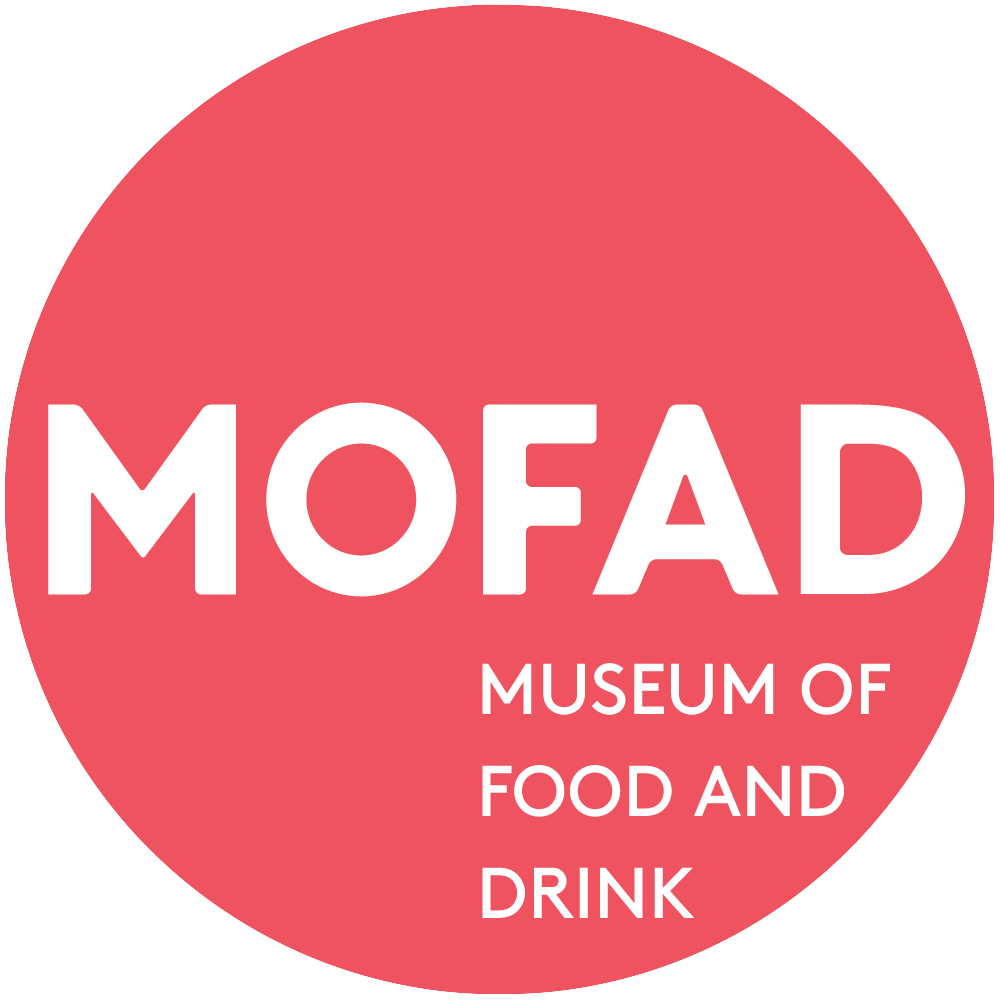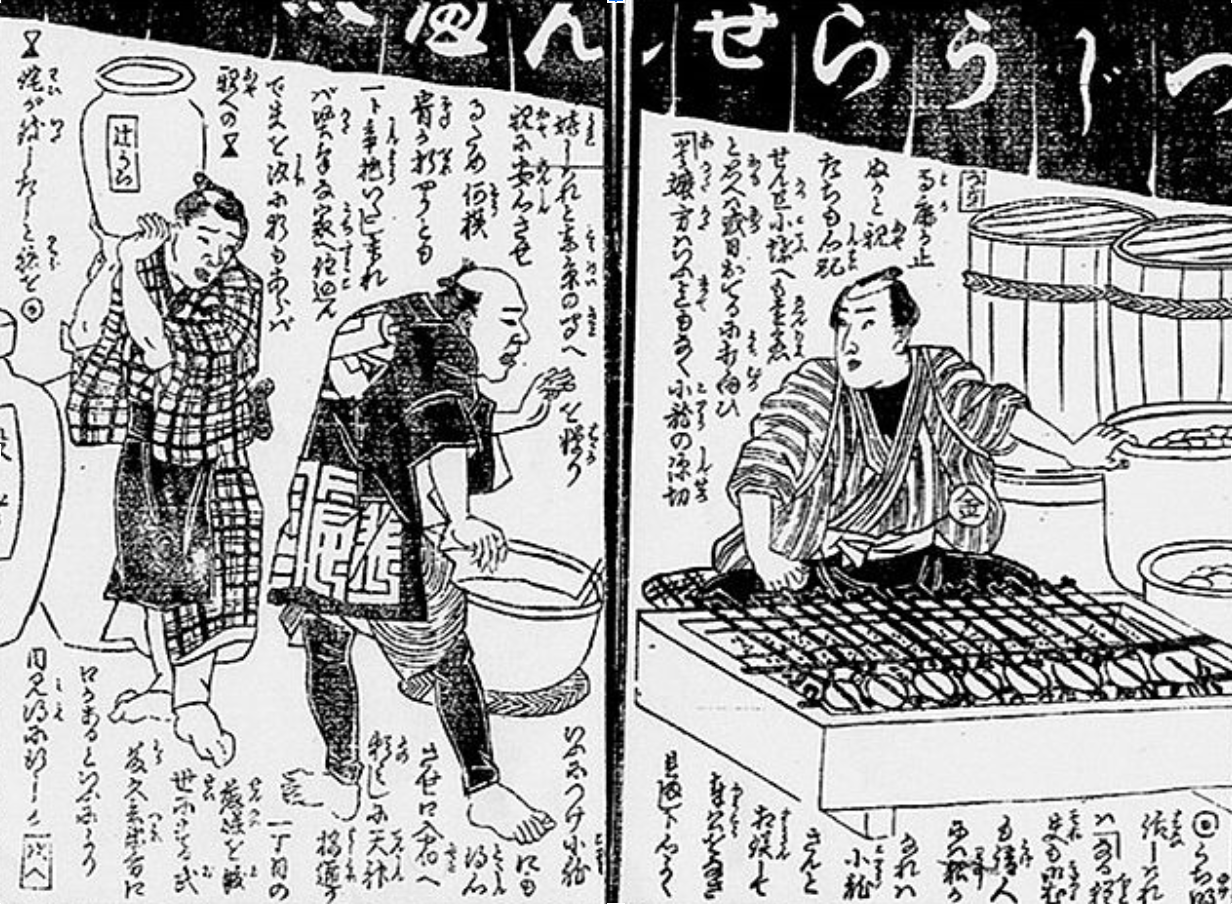
There’s a Fortune in My Cookie!
Uncover the history of this famous Chinese American treat and make your own origami fortune cookie.
Many Americans have fond memories of eating and sharing fortune cookies after a meal at their favorite Chinese restaurant or take-out. It’s fun to open the cookies together and read the fortunes out loud to each other. You could even say it's a tradition.
Believe it or not, most people who live in China have probably never had this experience. It’s true! Fortune cookies as we know them today are not a part of traditional Chinese culture. But how can that be?
To solve the history mystery of the fortune cookie, keep reading. Afterwards you can make your own paper fortune cookie using simple materials you have at home:
Chapter One:
Made in Japan
Baking Japanese fortune cookies, Tsujiura Senbei in the Edo period (1603-1868) from a book written in 1878.
Although no one knows for sure, most folks agree that the fortune cookies we eat today are a relative of traditional wafers from ancient Japan. Back in the days when everything was made by hand, these traditional treats were produced by bakeries for special occasions and holidays.
Look at this drawing of an ancient Japanese bakery and see if you can spot the wafers that resemble our modern day fortune cookies. In Japan, these tasty treats were served with tea instead of at the end of a meal.
This drawing shows a scene from Japan hundreds of years ago. The workers are making cookies called Tsujiuri Senbei which means fortune cracker in Japanese. This delicacy is an ancestor of the fortune cookies we eat today. What objects and ingredients do you see in the drawing that may have been used in creating tsujiura senbei? You can print this picture out and color it!
Many Japanese people began to immigrate to the United States in the 1800s. Most of them settled in California. They brought their recipes for tsujiura senbei with them and began to sell them to Americans, including Chinese immigrants. The Benkyodo Bakery in San Francisco, California, is believed to be the first bakery to sell their tsujiura senbei to local Japanese restaurants. One of these restaurants was a tea house in San Franciso’s Japanese Tea Garden. The garden and tea house are still popular today!
Chapter Two:
Cookie Finds a New Home
Japanese Tea Garden, Golden State Park, San Francisco, California
Chapter Three:
Cookie Gets a New Name
Ms Cleo, the fortune cookie machine displayed at MOFAD as part of Chow: Making the Chinese American Restaurant. This fortune cookie machine can produce up to 600 fortune cookies in one hour.
By the early 1900s, Chinese American restaurants were becoming very popular in the United States. The Chinese American immigrants who owned and operated them were changing traditional Chinese foods to suit American tastebuds, creating a whole new cuisine called Chinese American food. This is the cuisine most Americans still eat today, although many more varieties are available now than one hundred years ago.
Chinese American restaurant owners liked the Japanese tsujiura senbei so much that they started to serve them to their customers after meals. Tsujiura senbei were soon being called Fortune Cookies and they were a hit! Japanese bakeries could not keep up with the demand for the fortune cookies, so machines were invented that could produce many more cookies than people could make by hand.
Fortune cookies are still very popular today in the United States and many other countries. There are approximately 3 billion fortune cookies made each year around the world, and most of them are eaten in the United States. The largest manufacturer of the cookies is Wonton Food Inc., headquartered in Brooklyn, New York. They make over 4.5 million fortune cookies per day!
Now that you know the history of the fortune cookie, celebrate both its Japanese and Chinese American history by making one out of paper with the Japanese paper folding technique, origami. It’s super easy and lots of fun for people of all ages. You can make one and give it to someone else in place of a greeting card, or make a whole bunch and use them for decoration. When you are finished, take a picture and post it to our Facebook or Instagram page - we’d love to see your creations!





